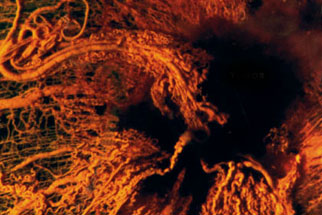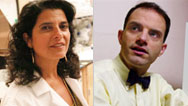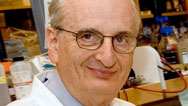Angiogenesis Explained
- By Susan K. Lewis
- Posted 07.01.08
- NOVA scienceNOW
Blood vessel growth—or angiogenesis—is critical for developing fetuses and to heal wounds. But it is also an essential element of how cancerous tumors grow and spread. Here, see a step-by-step explanation of how the process works and how anti-angiogenesis therapies might stop tumors before they become deadly.
 Launch Interactive
Printable Version
Launch Interactive
Printable Version
See how cancerous tumors recruit their own blood supply in order to grow and how this process might be stopped.
Credits
Images
- (ultrasound)
- Isabelle Limbach/istockphoto.com;
- (pregnant belly)
- Greg Blomberg/istockphoto.com;
- (finger with stitches)
- Erich Schrempp/Photo Researchers, Inc.;
- (blood vessels and tumor)
- Courtesy Children's Hospital Boston;
- (all illustrations)
- © WGBH Educational Foundation/Adapted from original illustration courtesy the Angiogenesis Foundation.
Related Links
-

Profile: Judah Folkman
Once scorned for his ideas about how cancer grows through angiogenesis, Judah Folkman is now hailed as a visionary.
-

Judah Folkman: Expert Q&A
Two of Folkman's colleagues at Children's Hospital Boston answer questions about treatments for cancer and eye disease.
-

Cancer Warrior Judah Folkman
In this extensive interview, Judah Folkman reflects on his cancer research, his hopes for future treatments, and more.
-

Judah Folkman Interview Excerpts
Renowned cancer researcher Judah Folkman talks about riding the "fine line between persistence and obstinacy," and more.
You need the Flash Player plug-in to view this content.



